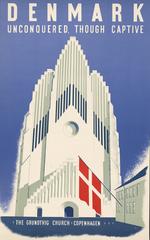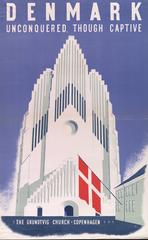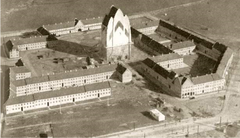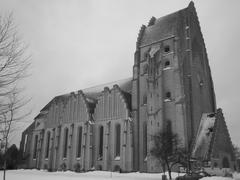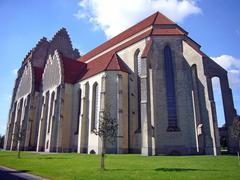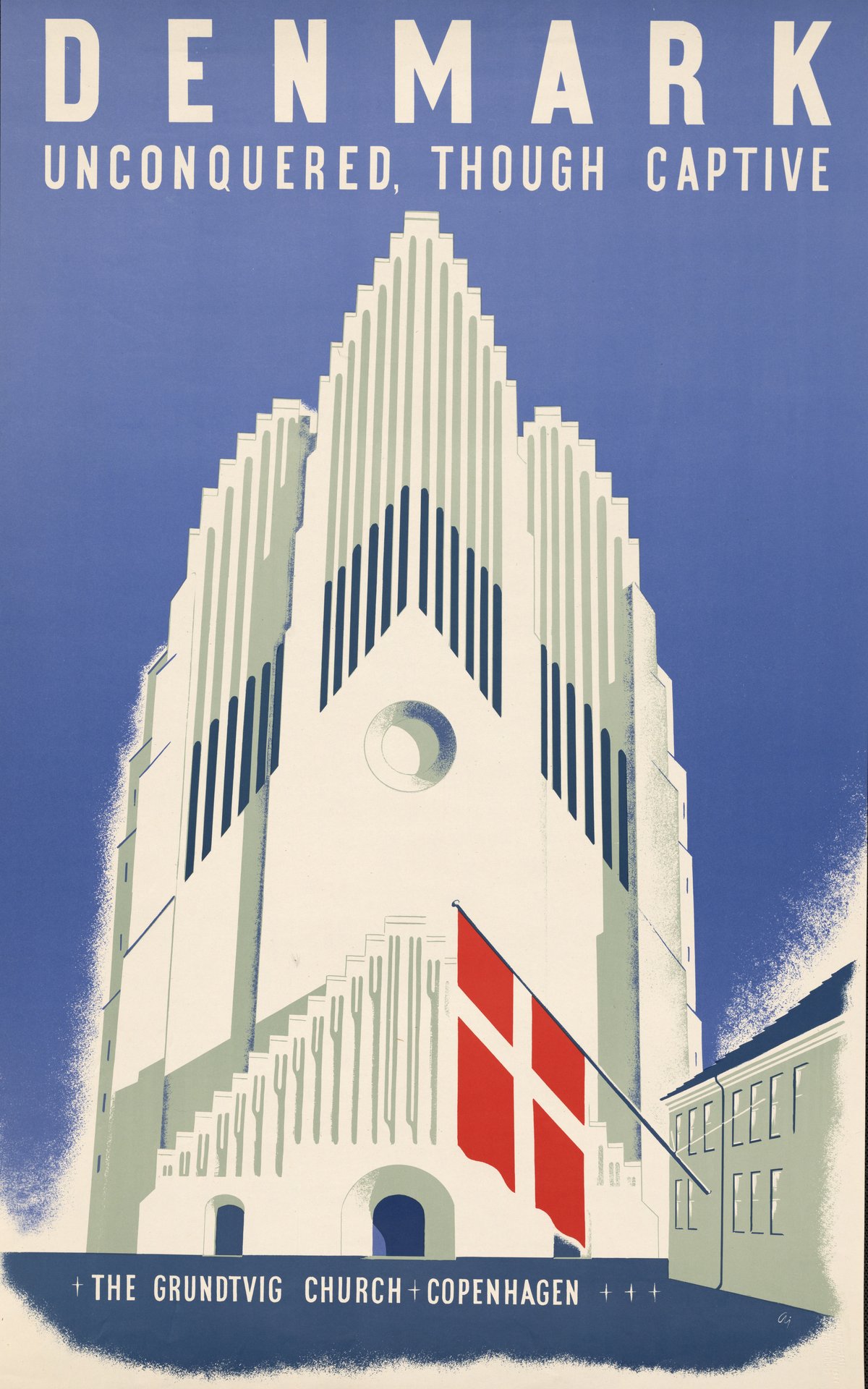
Grundtvig Church Copenhagen: Visiting Hours, Tickets, and Comprehensive Visitor Guide
Date: 14/06/2025
Introduction
Grundtvig’s Church (Grundtvigs Kirke), situated in Copenhagen’s Bispebjerg district, stands as a singular achievement in Danish architecture—a harmonious blend of national heritage and modern Expressionist design. Dedicated to N.F.S. Grundtvig, a key figure in Danish culture and Lutheran tradition, the church is renowned for its monumental yellow brick construction, towering 49-meter bell tower, and distinctive stepped gables. It serves both as an active parish and a vibrant cultural venue, drawing architecture enthusiasts, history lovers, and travelers from around the world. This detailed guide covers the church’s historical context, architectural features, practical visiting information—including hours, tickets, accessibility, transport options—nearby attractions, and frequently asked questions to ensure a rewarding visit (vielfaltdermoderne.de, archeyes.com, whitemad.pl).
Table of Contents
- Introduction
- History and Dedication
- Architectural Highlights
- Construction and Urban Context
- Visiting Information
- Frequently Asked Questions (FAQ)
- Conclusion and Travel Tips
- Sources
History and Dedication
Grundtvig’s Church was envisioned as a national monument to honor Nikolaj Frederik Severin Grundtvig, a philosopher, pastor, and leading voice in Danish cultural reform. In the early 20th century, a competition was held to design a church reflecting Danish identity and heritage. Architect Peder Vilhelm Jensen-Klint’s winning proposal fused traditional Danish village church motifs with Brick Expressionism and elements of Scandinavian Gothic. Construction began in 1921, with the church’s west façade and bell tower completed by 1927. After Jensen-Klint’s passing, his son Kaare Klint finished the church, which was consecrated in 1940 (archeyes.com, whitemad.pl).
Architectural Highlights
Expressionist and Vernacular Synthesis
The church’s stepped gables and exclusive use of yellow brick echo rural Danish churches, reinterpreted through a modern, Expressionist lens. Its monumental west façade, dominated by a 49-meter bell tower, is often likened to a giant organ—symbolizing both Danish culture and spiritual aspiration (archeyes.com).
Masterful Brickwork
Approximately six million yellow bricks were used in construction, showcasing craftsmanship and the versatility of brick as a Danish building material. The church’s minimalist aesthetic avoids ornate decoration, instead celebrating the tactile beauty and honesty of brickwork (Copenhagen Architecture).
Spacious, Light-Filled Interior
Inside, the triple-aisled nave soars to 22 meters, with pointed arches and ribbed vaults evoking Gothic cathedrals. The interior is bathed in daylight from tall, narrow windows, creating a serene and contemplative atmosphere. The space accommodates up to 1,800 people (archeyes.com).
Urban Setting
Grundtvig’s Church forms the visual terminus of a Baroque-inspired, tree-lined avenue. Flanked by parish halls and residential buildings (“På Bjerget”), it anchors the community and integrates sacred and secular spaces (whitemad.pl).
Visiting Information
Opening Hours
- Monday to Saturday: 09:00–16:00 (extended to 18:00 on Thursdays)
- Sunday: 12:00–16:00 (13:00 in winter months)
- Closed during services: Including Sunday mass at 10:00 and ad hoc ceremonies (grundtvigskirke.dk, visitcopenhagen.com, European Traveler).
Tickets and Admission
- Entry: Free of charge for all visitors
- Donations: Appreciated but not required (TripVenture)
Guided Tours and Events
- Guided Tours: Available on request, usually in Danish; advance booking recommended, especially for groups. Tours are free (Aleks Jakobsons).
- Tower Access: Only during special guided tours, offering panoramic city views. Check the official website for details.
- Concerts and Cultural Events: The church is known for its Marcussen organ and hosts regular concerts, choral performances, and community events (whitemad.pl).
Accessibility
- Main areas: Wheelchair accessible, with ramps and appropriate facilities.
- Tower and galleries: Require stair climbing.
- Restrooms: Available on-site.
- Assistance: Recommended to contact the church in advance for special needs (TripVenture).
Getting There
- Address: På Bjerget 14B, 2400 Copenhagen NV, Denmark
- Public Transport:
- Bus 6A: Stops at Bispebjerg Torv (Zone 2)
- Bus 4A: From Nørrebro train and metro station
- Bicycle: 30-minute ride from city center (Act of Traveling)
- Car: Limited street parking; public transport recommended
Visitor Experience and Etiquette
- Atmosphere: Quiet, contemplative environment; respect required during services (Toolack).
- Photography: Permitted for personal use; flash/tripods restricted during services.
- Dress Code: Modest attire recommended.
Nearby Attractions
- Bispebjerg Cemetery: Famous for cherry blossoms in spring
- Nørrebro District: Vibrant cultural area nearby
- Grundtvigskirken Residential Area: Designed in harmony with the church
- Other Sights: Copenhagen Cathedral, National Museum
Frequently Asked Questions (FAQ)
Q: What are Grundtvig’s Church visiting hours?
A: Monday to Saturday 09:00–16:00 (to 18:00 on Thursdays); Sunday 12:00–16:00 (13:00 in winter); closed during services.
Q: Is there an admission fee?
A: No, entry is free.
Q: Are guided tours available?
A: Yes, mainly in Danish; check the official website for availability.
Q: Is the church wheelchair accessible?
A: Yes, main areas are accessible; tower access involves stairs.
Q: How do I get there by public transport?
A: Bus lines 6A and 4A; nearest metro station is Nørrebro.
Q: Can I take photos?
A: Yes, for personal use; be respectful and avoid flash during services.
Q: Are there concerts or events?
A: Yes, regular organ concerts and community events are held throughout the year.
Conclusion and Travel Tips
Grundtvig’s Church is a testament to Danish cultural pride, architectural innovation, and spiritual heritage. Its monumental façade, minimalist yet grand interior, and integration into the local community make it an essential destination in Copenhagen. With free admission, accessibility features, and convenient public transport links, visitors can enjoy both the church and the surrounding historical neighborhoods. For an optimal experience, plan your visit around opening hours, check for special events or guided tours, and explore nearby attractions like Bispebjerg Cemetery and Nørrebro district. Stay updated by consulting the official website and related sources.
Enhance your trip by downloading the Audiala app for local guides and updates, and follow us on social media for insights into Copenhagen’s rich heritage.
Sources
- vielfaltdermoderne.de
- archeyes.com
- whitemad.pl
- visitcopenhagen.com
- grundtvigskirke.dk
- European Traveler
- TripVenture
- Aleks Jakobsons
- Copenhagen Architecture
- Act of Traveling
- Toolack
